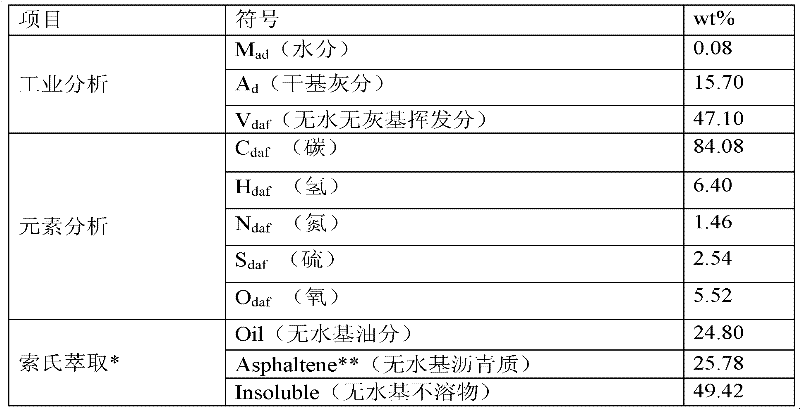Method for extracting heavy liquefied oil from residue of coal direct liquefaction, extracted heavy liquefied oil, and application thereof
A technology for heavy liquefied oil and liquefied residue, which is applied in the field of coal deep processing, can solve the problems of low sedimentation separation efficiency, harsh extraction conditions, and high equipment requirements, so as to improve the overall economic benefits, improve solvent recovery rate, and small equipment volume Effect
- Summary
- Abstract
- Description
- Claims
- Application Information
AI Technical Summary
Problems solved by technology
Method used
Image
Examples
Embodiment
[0063] The basic test procedure is as follows:
[0064] This test selects a coal direct liquefaction residue produced on a 0.1t / d coal direct liquefaction device, and the properties of the residue are shown in Attached Table 1. First, use a jaw crusher to crush the residue to less than 2mm. Such as figure 1 As shown, 150Kg of crushed coal direct liquefaction residue powder 1 and 300Kg of extraction solvent 2 are added to the residue extraction device 3, and the extraction operation is carried out under the extraction conditions shown in Attached Table 2, and the extraction is carried out under the conditions of stirring and forced circulation , and then pump the extracted solid-liquid mixture into the cyclone separator 4 for solid-liquid separation to obtain 259.5Kg of the clear liquid phase mixture overflowing from the upper layer, with a solid phase concentration of 1.9%, which flows into the first storage tank 5, and then pressed into the precision Filtration device 6, the ...
PUM
| Property | Measurement | Unit |
|---|---|---|
| particle diameter | aaaaa | aaaaa |
| loss value | aaaaa | aaaaa |
Abstract
Description
Claims
Application Information
 Login to View More
Login to View More - R&D
- Intellectual Property
- Life Sciences
- Materials
- Tech Scout
- Unparalleled Data Quality
- Higher Quality Content
- 60% Fewer Hallucinations
Browse by: Latest US Patents, China's latest patents, Technical Efficacy Thesaurus, Application Domain, Technology Topic, Popular Technical Reports.
© 2025 PatSnap. All rights reserved.Legal|Privacy policy|Modern Slavery Act Transparency Statement|Sitemap|About US| Contact US: help@patsnap.com



